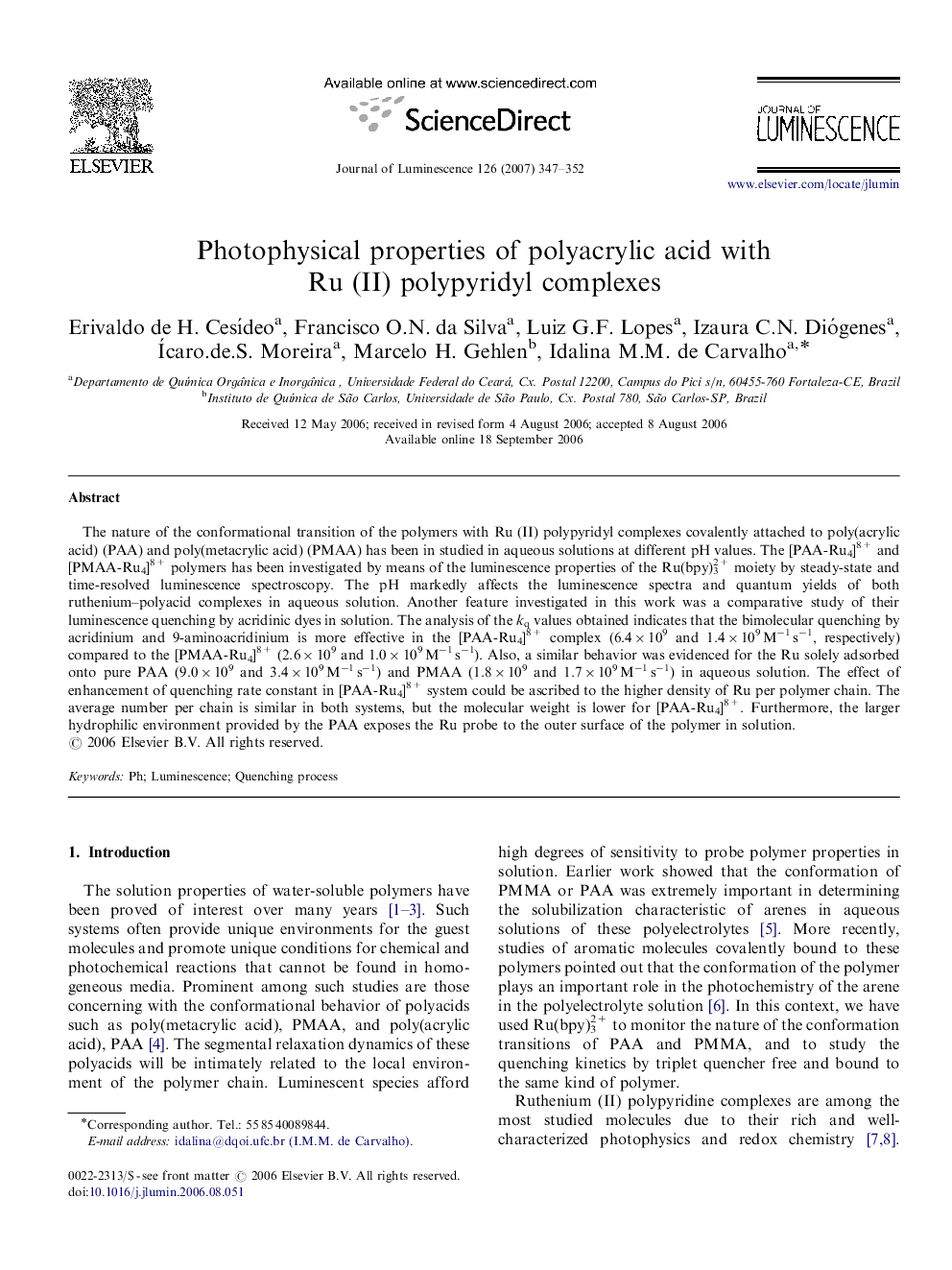| Article ID | Journal | Published Year | Pages | File Type |
|---|---|---|---|---|
| 5403335 | Journal of Luminescence | 2007 | 6 Pages |
Abstract
The nature of the conformational transition of the polymers with Ru (II) polypyridyl complexes covalently attached to poly(acrylic acid) (PAA) and poly(metacrylic acid) (PMAA) has been in studied in aqueous solutions at different pH values. The [PAA-Ru4]8+ and [PMAA-Ru4]8+ polymers has been investigated by means of the luminescence properties of the Ru(bpy)32+ moiety by steady-state and time-resolved luminescence spectroscopy. The pH markedly affects the luminescence spectra and quantum yields of both ruthenium-polyacid complexes in aqueous solution. Another feature investigated in this work was a comparative study of their luminescence quenching by acridinic dyes in solution. The analysis of the kq values obtained indicates that the bimolecular quenching by acridinium and 9-aminoacridinium is more effective in the [PAA-Ru4]8+ complex (6.4Ã109 and 1.4Ã109Â Mâ1Â sâ1, respectively) compared to the [PMAA-Ru4]8+ (2.6Ã109 and 1.0Ã109Â Mâ1Â sâ1). Also, a similar behavior was evidenced for the Ru solely adsorbed onto pure PAA (9.0Ã109 and 3.4Ã109Â Mâ1Â sâ1) and PMAA (1.8Ã109 and 1.7Ã109Â Mâ1Â sâ1) in aqueous solution. The effect of enhancement of quenching rate constant in [PAA-Ru4]8+ system could be ascribed to the higher density of Ru per polymer chain. The average number per chain is similar in both systems, but the molecular weight is lower for [PAA-Ru4]8+. Furthermore, the larger hydrophilic environment provided by the PAA exposes the Ru probe to the outer surface of the polymer in solution.
Keywords
Related Topics
Physical Sciences and Engineering
Chemistry
Physical and Theoretical Chemistry
Authors
Erivaldo de H. CesÃdeo, Francisco O.N. da Silva, Luiz G.F. Lopes, Izaura C.N. Diógenes, Ícaro.de.S. Moreira, Marcelo H. Gehlen, Idalina M.M. de Carvalho,
